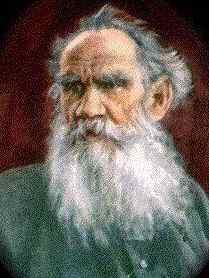
[From article]
Though his sonnet was on Westminster Bridge, London, William Wordsworth might have used the same words to describe Venice, “a sight so touching in its majesty.” Everyone is enchanted by its incomparable beauty, admires the splendor and majesty of Piazza San Marco, and is amazed by the uniqueness of a city built on more than 150 islands, a UNESCO World Historic Site.
A part of the city, less known for its artistic splendor but historically significant is the Jewish Ghetto in the Cannaregio district that is in 2016 being commemorated on the 500th anniversary of its creation. The word Ghetto comes from the Italian geto or metal foundry. The Venetian Ghetto, one of the first to be established in Europe but unique and unforgettable in character, was created on March 29, 1516 by the Doge Leonardo Loredan to segregate Jews from the rest of the population of the city.
Walls enclosed the Ghetto in an area, the Campo di Ghetto Nuovo, little more than one acre in size, and the gates were locked at night. Jews, except doctors, leaving the Ghetto were obliged to wear distinctive clothes with a yellow badge, hat, or scarf. It was tantamount to a benevolent prison, but at the same time it showed that Jews were accepted, if isolated, as part of Venetian society at a time when Jews were not allowed in Britain.
In the 17th century about 5,000 Jews lived in the Ghetto, out of a total population of 58,000 people in the city. It was cosmopolitan, as different groups of Jewish immigrants, from Spain, Portugal, the Levant, and Eastern Europe, entered the area, and set up five synagogues. In 1797, French troops under Napoleon entered the city and ended the Ghetto as a confining area. Jews could move out, and the rich members did so.
The number of Jews in the area declined. At the start of World War II in 1939 there were 1,200 in Venice, and 50,000 in the whole of Italy. They suffered during the war, first because of the 1938 Italian race laws and then from the Holocaust. In Venice 246, including the Chief Rabbi, were deported to Auschwitz-Birkenau, of whom only eight survived.
[. . .]
Today, the center of Jewish life is still, religiously and symbolically, the Ghetto, but only a small part of the 400 Jews in Venice live there in debilitated buildings, although they attend religious services in the five synagogues there. The Campo di Ghetto Nuovo also contains a yeshiva, two Holocaust memorials, an old age home, and social activities.
But it is a reminder of the continuing existence of the disease of anti-Semitism in Italy as in the rest of Europe that police in a booth at the end of the Campo are on guard night and day.
[. . .]
Security measures have been necessary at Jewish schools and synagogues since the mid-1980s after the attack on Rome’s Great Synagogue in 1982.
One particularly disturbing incident concerned the memorial to those who died in the Nazi death camps. A swastika was scrawled on the Jewish small memorial plaque in the building on the Via della Lungara, near the Vatican. This is the very place where in the razzia, the mass roundup on October 16, 1943, 1259 Jews, including more than 900 women and children, were taken and held after their arrest by the Nazis. They were deported to Auschwitz and only 16 survived. Controversy still exists over the behavior on that occasion of Pope Pius XII, on whether he helped to save the Roman Jews and on whether he ordered church officials to open the doors of their properties to save Jews.
[. . .]
In the light of these attitudes of Jews and non-Jews, the 500th anniversary of the creation of the Ghetto is a symbolic event, a significant sign of the official Italian determination to honor it, and to envisage it as a meeting place of people and of cultures. The intention is to illustrate the relationship between Jews and the rest of Venetians throughout the ages. The events will feature a performance of Mahler’s First Symphony at the Fenice Opera House, and exhibition on “Venice, the Jews, and Europe,” at the Palazzo Ducale, and performances of The Merchant of Venice in the Ghetto itself. Perhaps most interesting of all is that Supreme Court Justice Ruth Bader Ginsburg will preside over a trial of the unforgettable character Shylock which may result in a verdict different from that given in the play by Portia.
Many are pessimistic or realistic about the forthcoming death of Venice through the effect of the anarchy of water. Venice is sinking up to 0.08 inches a year as well as tilting towards the east. This floating jewel of a city may disappear as the sea level rises. This 500th commemoration of the Ghetto is all the more welcome as an optimistic reminder not only of the place of Jews in Venetian life but also of the emancipation of Jews from confinement there as elsewhere. The Ghetto now can be seen as a center for the revival of Jewish life and culture, not as a confinement or contrivance for possible annihilation of Jews.
http://www.americanthinker.com/articles/2016/05/jews_remembered_in_venice.html
May 8, 2016
Jews Remembered in Venice
By Michael Curtis






No comments:
Post a Comment